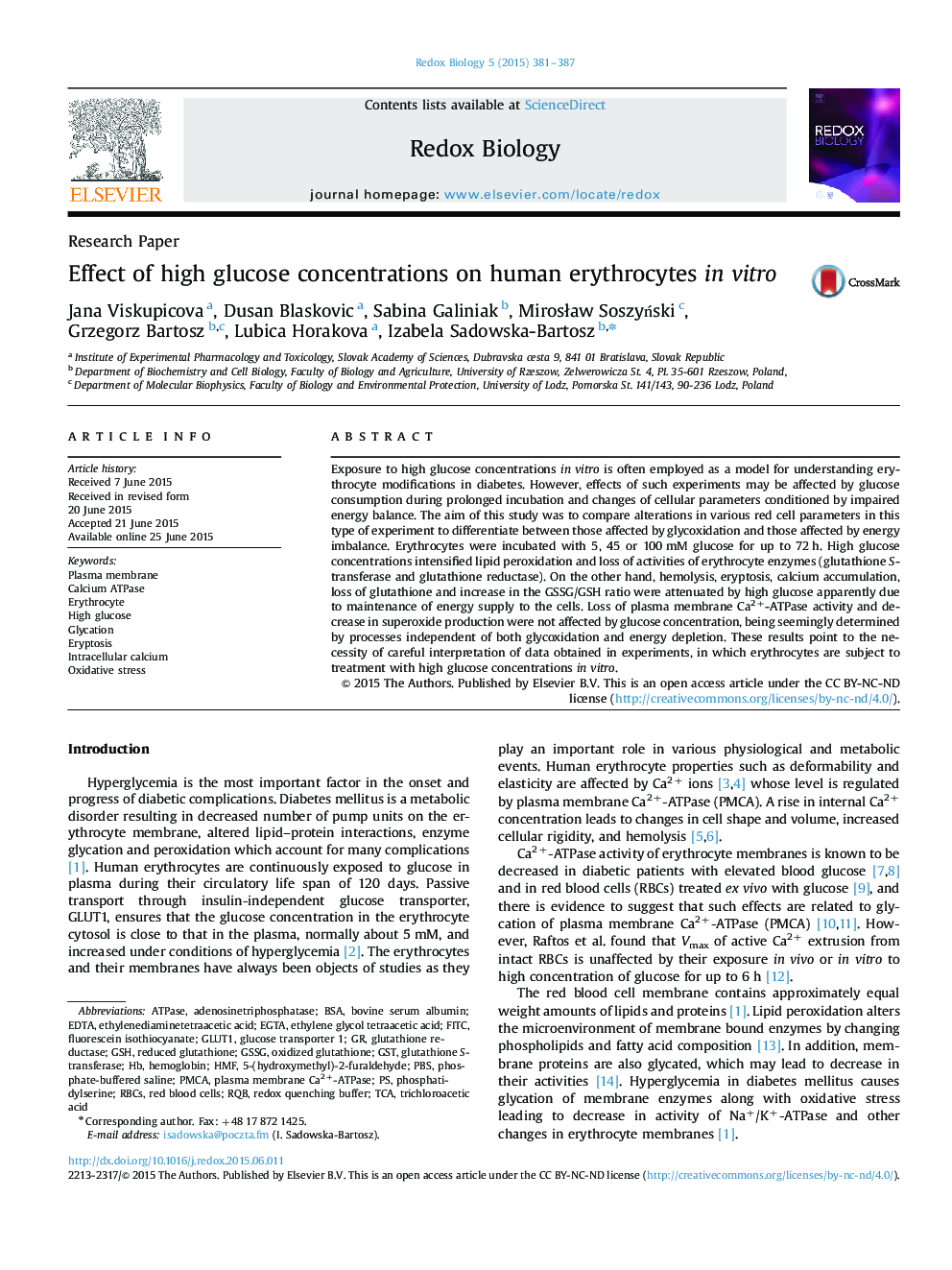| Article ID | Journal | Published Year | Pages | File Type |
|---|---|---|---|---|
| 1923167 | Redox Biology | 2015 | 7 Pages |
•Erythrocytes were incubated for up to 72 h in 5 mM, 45 mM and 100 mM glucose.•High glucose concentrations intensified lipid peroxidation.•High glucose attenuated hemolysis, eryptosis, Ca2+ accumulation and glutathione loss.•Glucose is a glycating agent but also energy source.•Results of exposure to high glucose should be interpreted with care.
Exposure to high glucose concentrations in vitro is often employed as a model for understanding erythrocyte modifications in diabetes. However, effects of such experiments may be affected by glucose consumption during prolonged incubation and changes of cellular parameters conditioned by impaired energy balance. The aim of this study was to compare alterations in various red cell parameters in this type of experiment to differentiate between those affected by glycoxidation and those affected by energy imbalance. Erythrocytes were incubated with 5, 45 or 100 mM glucose for up to 72 h. High glucose concentrations intensified lipid peroxidation and loss of activities of erythrocyte enzymes (glutathione S-transferase and glutathione reductase). On the other hand, hemolysis, eryptosis, calcium accumulation, loss of glutathione and increase in the GSSG/GSH ratio were attenuated by high glucose apparently due to maintenance of energy supply to the cells. Loss of plasma membrane Ca2+-ATPase activity and decrease in superoxide production were not affected by glucose concentration, being seemingly determined by processes independent of both glycoxidation and energy depletion. These results point to the necessity of careful interpretation of data obtained in experiments, in which erythrocytes are subject to treatment with high glucose concentrations in vitro.
Graphical abstractFigure optionsDownload full-size imageDownload as PowerPoint slide
